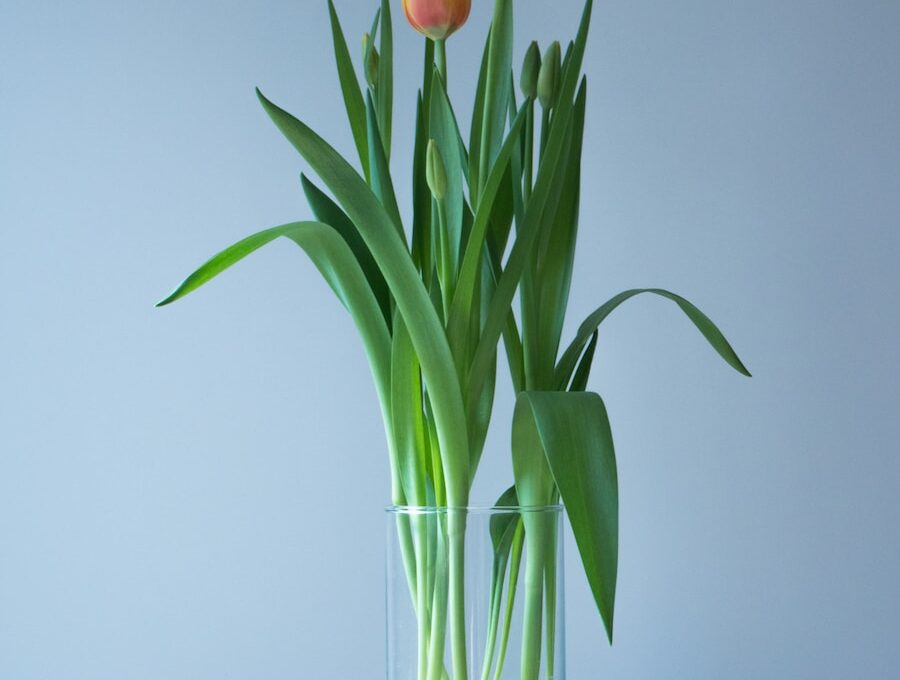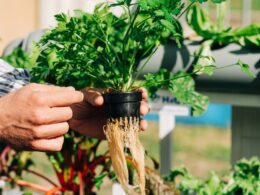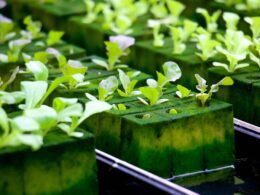Are you considering growing hydroponics but unsure if a greenhouse is the right choice for your crops? Hydroponics is a method of growing plants without soil, using nutrient-rich water instead. It’s a popular way to grow crops as it allows for year-round harvesting, maximizes space, and reduces water usage.
But when it comes to growing hydroponics, you may be wondering if a greenhouse is necessary or if it could even be harmful to your plants. In this article, we’ll explore the advantages and disadvantages of growing hydroponics in a greenhouse, as well as alternative methods of growing hydroponics.
You’ll learn about the benefits of growing in a controlled environment, but also the potential risks and challenges. By the end of this article, you’ll have a better understanding of whether a greenhouse is the right choice for your hydroponic garden and how to maximize your crop’s growth potential.
Understanding Hydroponics
Learning about hydroponics is crucial for those interested in indoor gardening. Hydroponic systems are a method of growing plants without soil, using nutrient solutions to feed them. This technique has been around since ancient times, and many people today are using it as a way to grow plants indoors.
The benefits of using hydroponics in indoor gardening are many. For one, hydroponic systems use less water than traditional soil-based systems, making them more environmentally friendly. Additionally, hydroponic systems can produce higher yields of crops, since the plants are receiving all the necessary nutrients they need to grow.
Overall, understanding hydroponics is essential if you’re interested in indoor gardening. This method of growing plants can be used in a greenhouse or other indoor setting and can provide many benefits. Whether you’re looking to grow a few herbs for your kitchen or larger crops for commercial purposes, hydroponic systems are worth considering.
Advantages of Growing Hydroponics in a Greenhouse
You can maximize the benefits of growing plants through hydroponics by utilizing the controlled environment of a greenhouse. Here are four advantages of growing hydroponics in a greenhouse:
-
Vertical farming: Hydroponics in a greenhouse allows for vertical farming, which means you can grow more plants in a smaller space. This is especially beneficial for urban areas where space is limited.
-
Sustainable agriculture: Growing hydroponics in a greenhouse reduces the need for pesticides and herbicides, making it a more sustainable form of agriculture. Additionally, hydroponics uses less water than traditional agriculture, making it a more eco-friendly option.
-
Controlled environment: A greenhouse provides a controlled environment for hydroponics, which means you can manipulate the temperature, humidity, and light to optimize plant growth. This results in a higher yield and faster growth rates.
-
Protection from external factors: A greenhouse protects your hydroponic plants from external factors such as pests, diseases, and weather conditions. This means you can grow your plants year-round without worrying about external factors affecting their growth.
Growing hydroponics in a greenhouse is a smart choice for anyone interested in sustainable agriculture and maximizing plant growth. By taking advantage of vertical farming, a controlled environment, and protection from external factors, you can increase your yield and grow plants faster than traditional agriculture. Plus, hydroponics in a greenhouse is a more eco-friendly option, reducing the need for pesticides and herbicides while using less water. So, consider using a greenhouse for your hydroponic plants and reap the benefits of this innovative farming method.
What are the Best Vegetables to Grow in a Hydroponic System in a Greenhouse?
When it comes to hydroponic systems in greenhouses, some of the best vegetables to grow are lettuce, tomatoes, cucumbers, and peppers. These crops thrive in the controlled environment of a hydroponic system, where water and nutrients are directly supplied to their roots. With proper care and monitoring, these best vegetables for hydroponic systems can yield excellent results and ensure a bountiful harvest.
Disadvantages of Growing Hydroponics in a Greenhouse
Growing plants using a controlled environment has its drawbacks, but it’s important to be aware of them to make informed decisions. When it comes to hydroponics in a greenhouse, ventilation concerns are one of the most important factors to consider.
Without proper ventilation, excess humidity and heat can build up, leading to mold and mildew growth that can harm your plants. Another disadvantage of growing hydroponics in a greenhouse is pest management.
Greenhouses are a popular breeding ground for pests such as spider mites, whiteflies, and aphids. Without proper pest management, these pests can quickly infest your plants, leading to reduced yield and potentially even killing off your entire crop.
To ensure successful hydroponic growth in a greenhouse, it’s important to address these concerns. Proper ventilation systems and pest management plans should be put in place to minimize the risks associated with growing hydroponics in a greenhouse.
By taking these precautions, you can enjoy the benefits of a controlled environment while minimizing the risks.
Alternative Methods of Growing Hydroponics
If you’re looking for different ways to cultivate plants using a controlled environment, there are alternative methods available that can provide similar benefits to hydroponics grown in a greenhouse. Here are some options to consider:
-
Outdoor hydroponics: This method uses natural sunlight and weather conditions to grow plants. It may require more planning and preparation, but it can be a cost-effective option for those who have access to outdoor space.
-
Indoor hydroponics: This method involves growing plants in an enclosed space with artificial lighting and temperature control. It allows for year-round growing and can be a great option for those who live in areas with extreme weather conditions.
-
DIY hydroponic systems: These systems can be customized to fit the needs of your plants and can be made from easily accessible materials. They can be a fun and cost-effective way to experiment with hydroponics.
By exploring these alternative methods, you can find a way to grow hydroponically without the limitations and disadvantages of a greenhouse. Outdoor hydroponics can provide a more natural growing environment, while indoor hydroponics can provide year-round growing opportunities. DIY hydroponic systems can be a great way to experiment and customize your growing setup. So, don’t limit yourself to just one method and explore the options that are available to you.
Conclusion: Is a Greenhouse Right for Your Hydroponic Garden?
Deciding whether a greenhouse is the right fit for your hydroponic garden can be a challenging task, but with the information provided in this article, you’ll be equipped to make an informed decision that suits your needs.
One thing to consider is the cost comparison between building a greenhouse and growing hydroponics indoors. While a greenhouse may require initial investment, it can save you money in the long run by reducing energy costs and providing a controlled environment for your plants to thrive in.
Another factor to consider is the environmental impact of using a greenhouse for your hydroponic garden. Greenhouses allow for year-round growing, which means less transportation of produce and a lower carbon footprint. Additionally, the controlled environment of a greenhouse can reduce the need for pesticides and other harmful chemicals, making it a more eco-friendly option.
Overall, whether a greenhouse is right for your hydroponic garden will depend on your specific needs and preferences. Consider the cost comparison and environmental impact, as well as the level of control and convenience a greenhouse can provide.
With the right setup, a greenhouse can be a great addition to any hydroponic garden.
Frequently Asked Questions
What types of plants are suitable for hydroponic growing in a greenhouse?
Vertical farming in a greenhouse is a great way to grow a variety of plants, especially those that thrive in a controlled environment. When it comes to hydroponics, there are many types of plants that are suitable for growing in nutrient-rich water solutions.
Some popular options include lettuce, herbs, tomatoes, and strawberries. However, successful hydroponic growing relies heavily on nutrient solution management, as the plants receive all of their nutrients directly from the water.
With proper management, a hydroponic greenhouse can yield high-quality, nutrient-dense produce year-round. So if you’re looking to start a hydroponic garden in your greenhouse, make sure to do your research and invest in a reliable nutrient management system.
How much does it cost to set up a hydroponic system in a greenhouse?
Looking to set up a hydroponic system in your greenhouse? Cost analysis is key when determining the feasibility of this project.
Some equipment requirements include grow lights, a water pump and nutrient solution, and a growing medium such as rockwool or peat moss.
While initial costs may be high, hydroponic systems can save money in the long run by reducing water usage and producing higher yields.
Keep in mind that regular maintenance and monitoring is necessary to ensure success.
Overall, with careful planning and investment, a hydroponic system in your greenhouse can be a great addition to your gardening endeavors.
Is it possible to grow hydroponically without a greenhouse?
If you’re considering hydroponics, you might be wondering if it’s possible to grow plants without a greenhouse. The answer is yes!
Indoor hydroponics systems can be set up in any room of your home, and outdoor hydroponics can be done on a balcony or patio. In fact, some hydroponic gardeners prefer to grow their plants indoors to have more control over the environment.
With indoor hydroponics, you can adjust the lighting, temperature, and humidity to create the perfect growing conditions for your plants. Outdoor hydroponics can also be a great option if you have limited space or want to grow plants in an urban environment.
So, don’t worry about needing a greenhouse to get started with hydroponics – there are plenty of options available to you!
How often do hydroponic plants need to be watered and fertilized?
To keep your hydroponic plants healthy and thriving, it’s important to water and fertilize them regularly. Automated hydroponic systems can make this task easier and more efficient. Depending on your system, you may need to water your plants multiple times per day or just a few times per week.
When it comes to fertilizing, comparing nutrient solutions for hydroponic plants can help you choose the best one for your specific crops. Follow the instructions provided by your nutrient solution manufacturer for the best results.
By keeping a consistent watering and fertilizing schedule, your hydroponic plants will grow strong and produce a bountiful harvest.
What are some common pests and diseases that affect hydroponic plants in a greenhouse?
Keeping hydroponic plants in a greenhouse can make them vulnerable to pests and diseases. Common issues include spider mites, aphids, whiteflies, and powdery mildew.
Prevention methods are crucial to avoid infestations, such as maintaining proper air circulation, using sticky traps, and regularly cleaning the greenhouse.
If pests or diseases do appear, treatment options vary depending on the specific issue. For example, a neem oil solution can be used to combat spider mites, while a sulfur-based fungicide can help with powdery mildew.
Early detection and swift action are key to keeping your hydroponic plants healthy and thriving.
Conclusion
So, should you grow hydroponics in a greenhouse? It really depends on your goals and circumstances.
If you want to maximize your yields and control the environment as much as possible, a greenhouse can be a great investment. You’ll have more control over temperature, light, humidity, and pests, which can help you grow healthier plants and harvest more crops.
However, if you’re on a tight budget or don’t have the space for a greenhouse, there are alternative methods of growing hydroponics that can work just as well. You can grow indoors with grow lights, or outdoors with shade cloth and other protective measures.
Ultimately, the best approach is the one that works best for you and your unique situation. So, weigh the pros and cons of a greenhouse carefully, and choose the method that suits your needs best.









